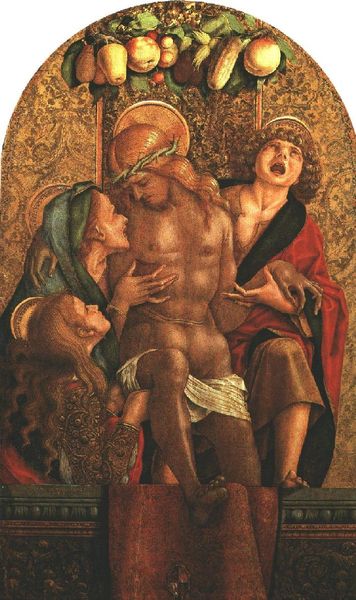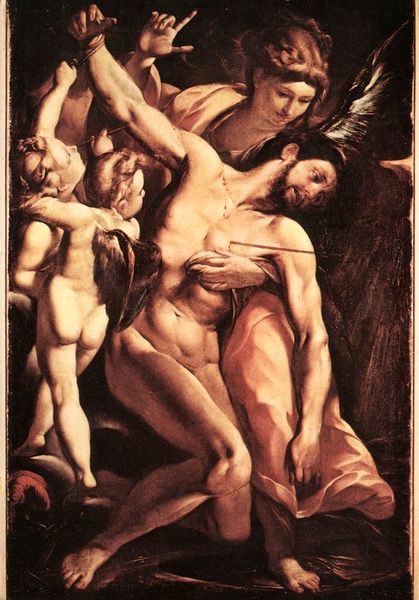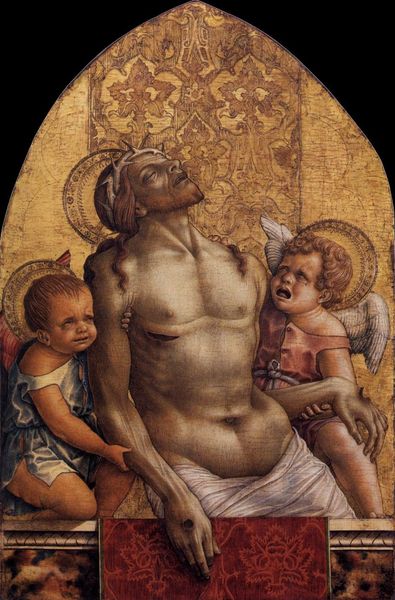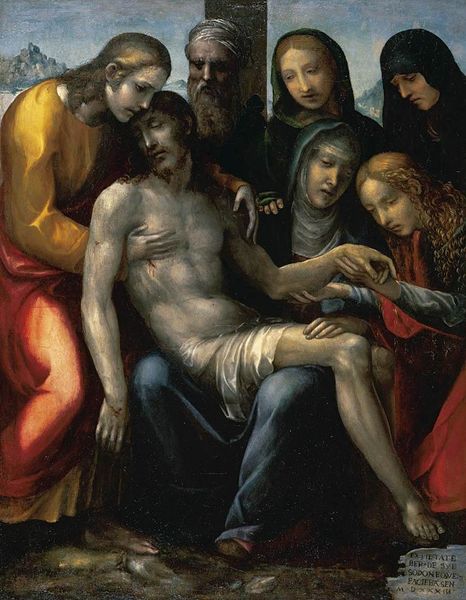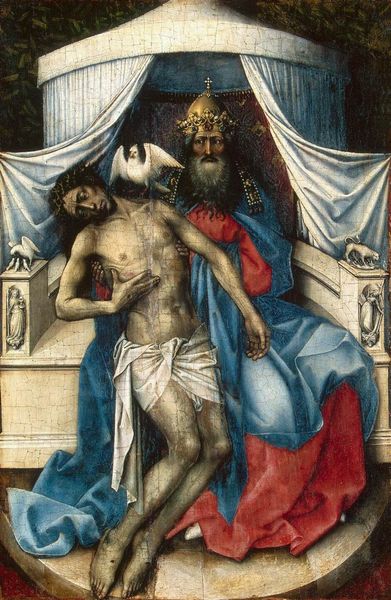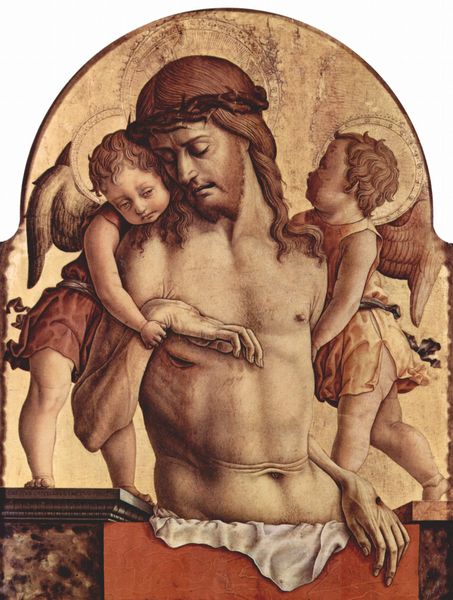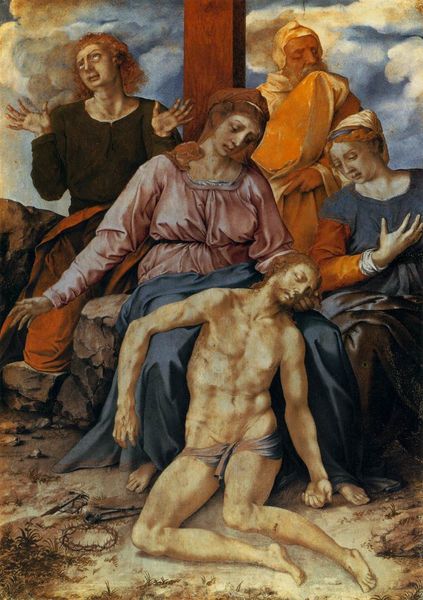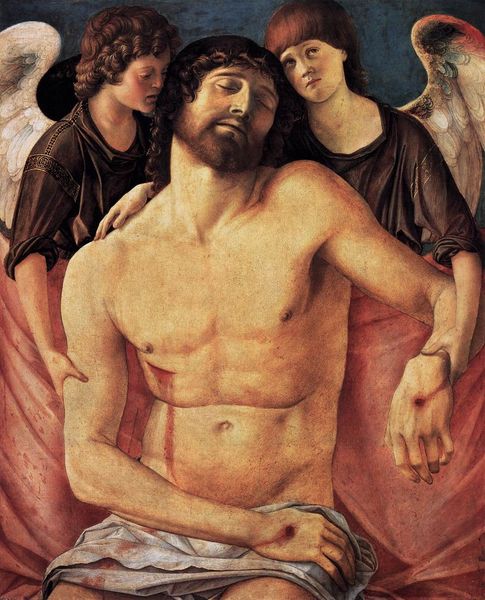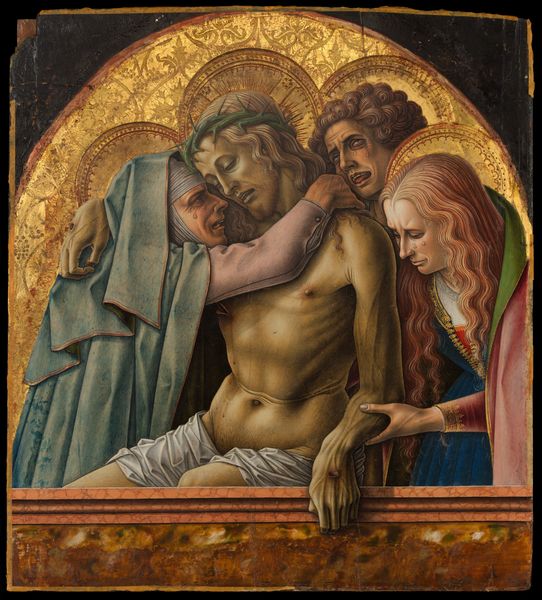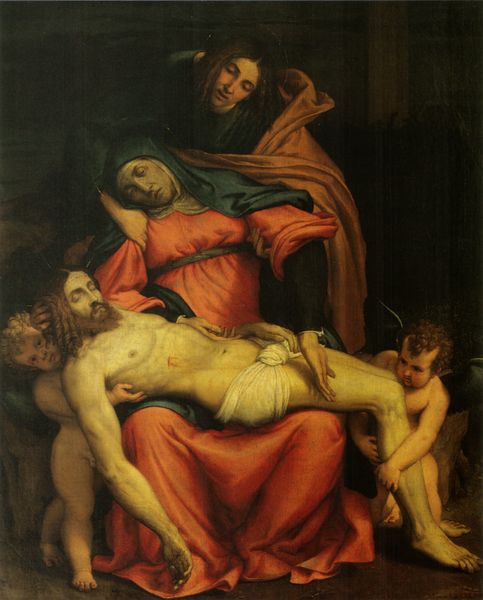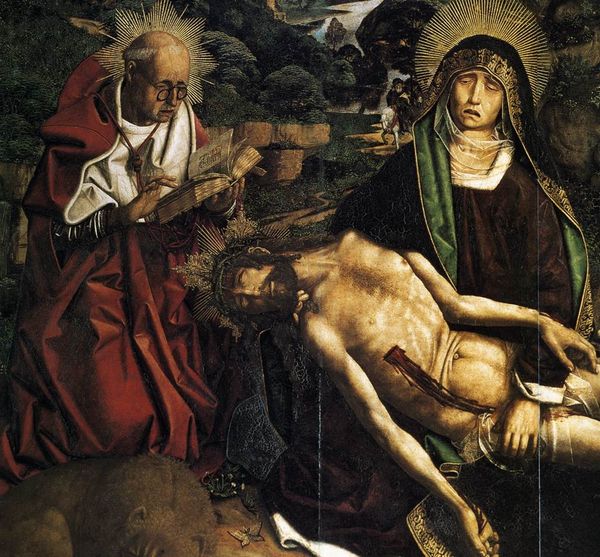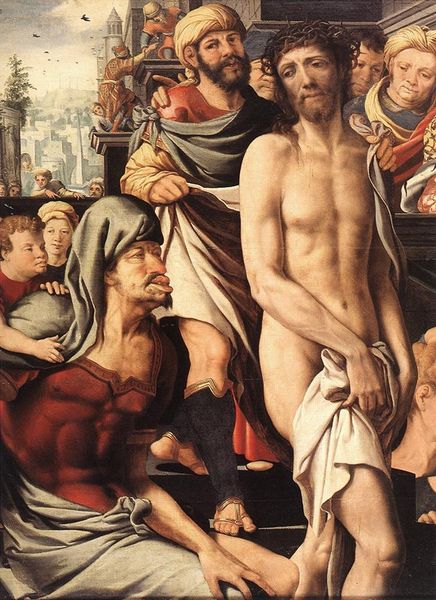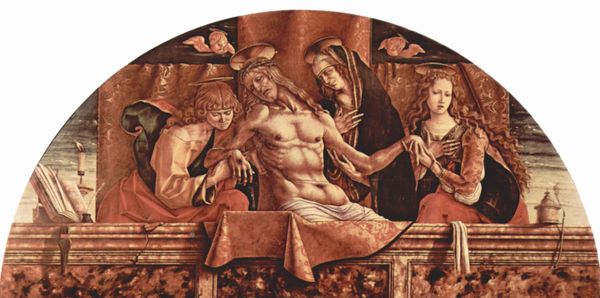
painting, oil-paint
#
medieval
#
painting
#
oil-paint
#
sculpture
#
figuration
#
oil painting
#
christianity
#
mythology
#
history-painting
#
italian-renaissance
#
christ
Dimensions: 88 x 53 cm
Copyright: Public domain
Editor: So, here we have Carlo Crivelli’s oil painting, "Lamentation Over the Dead Christ," from around 1485. The expressions are intense, almost grotesque. How would you interpret the dramatic composition of the scene? Curator: The power lies in the arrangement. Note how Crivelli uses strong diagonal lines formed by the figures’ bodies to draw the viewer’s eye toward Christ’s torso, which serves as the focal point. Also, consider the interplay of color: the muted flesh tones against the saturated reds and blues amplify the emotional intensity. It is a very formal structure that carries significant expressive weight. Editor: The fruits at the top seem a bit out of place, even decorative. Is that unusual? Curator: Not at all. They provide an important counterpoint to the scene of death. The placement creates a deliberate tension between life and death. Are you also noticing how the halos flatten the space, almost creating a pattern that intersects with the grief on display? Crivelli uses flatness to emphasize the picture plane and therefore the artifice. Editor: I do, now that you point it out. The figures almost seem pushed forward, creating a shallow space, yet their emotion feels palpable. The texture of the garments is beautifully rendered. It's an odd, fascinating contrast. Curator: Indeed. He’s interested in formalizing grief itself, rendering an experience that goes beyond just representing figures in Renaissance garb. We can appreciate his construction of space and symbolic flattening of the composition. Editor: It certainly gives me a lot to consider how much the artifice can contribute to the emotion. Thanks! Curator: A pleasure. It’s exciting to think about how these structural devices create meaning for the audience.
Comments
No comments
Be the first to comment and join the conversation on the ultimate creative platform.
